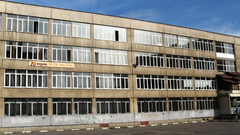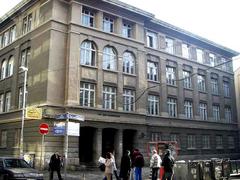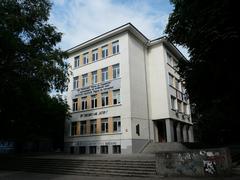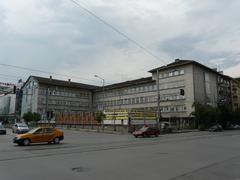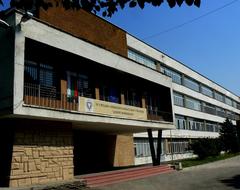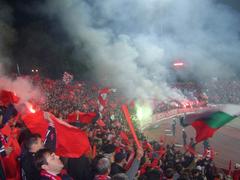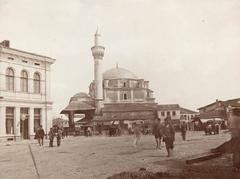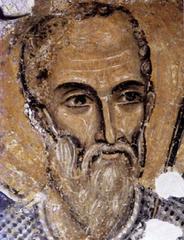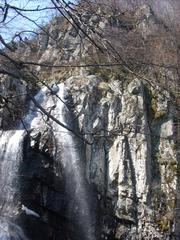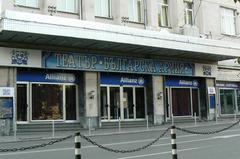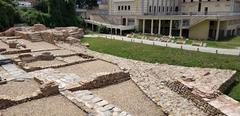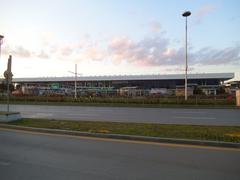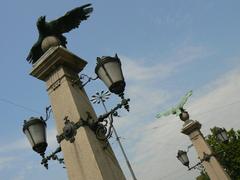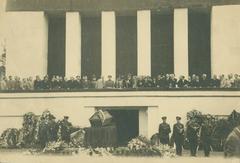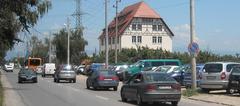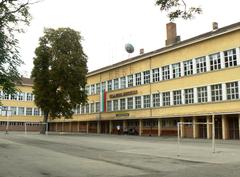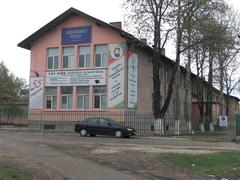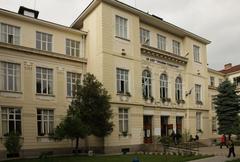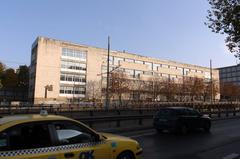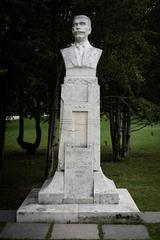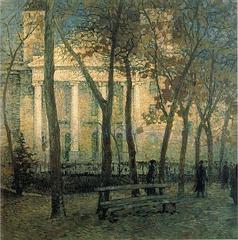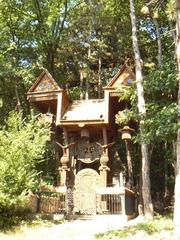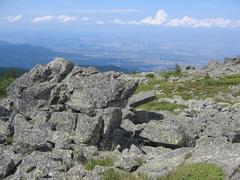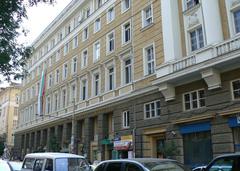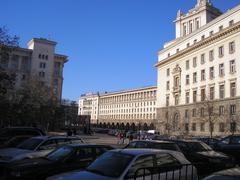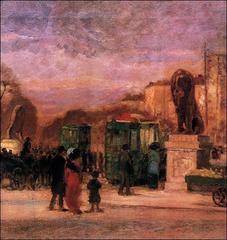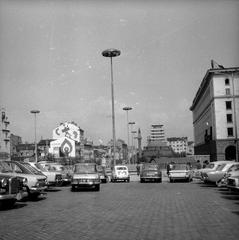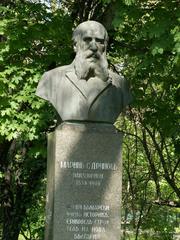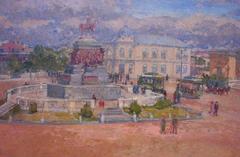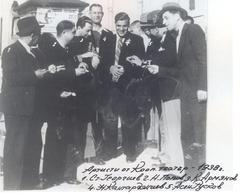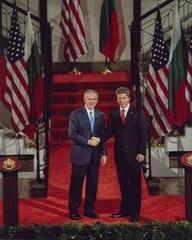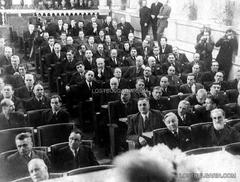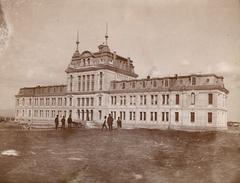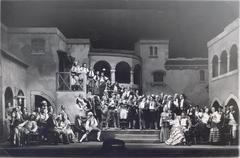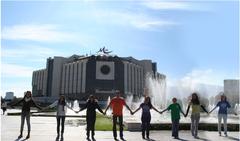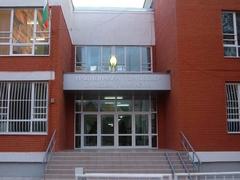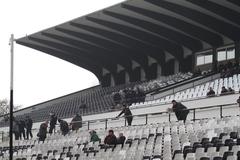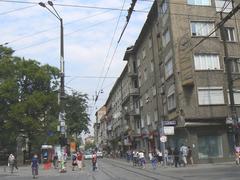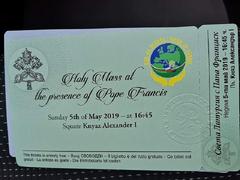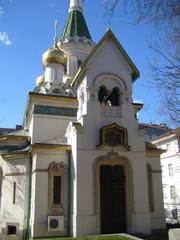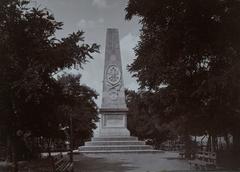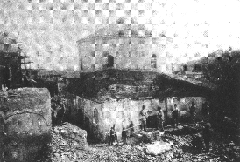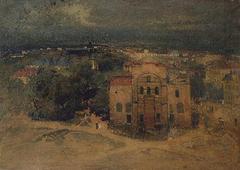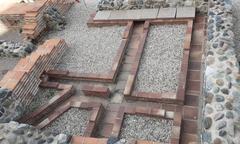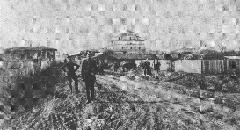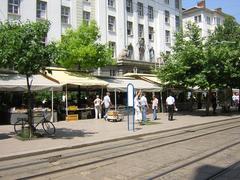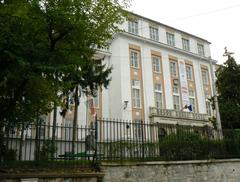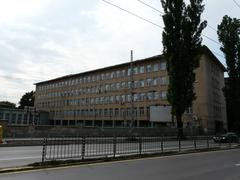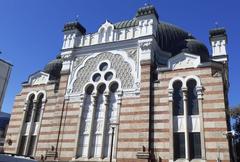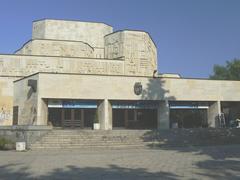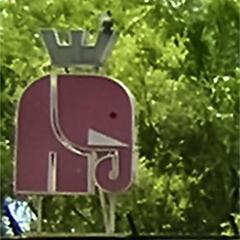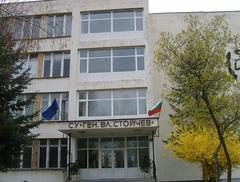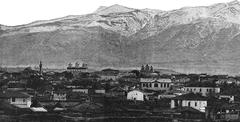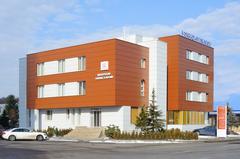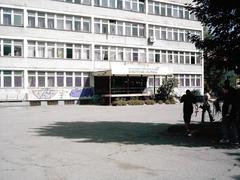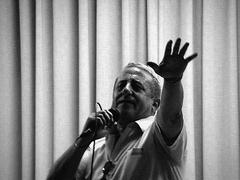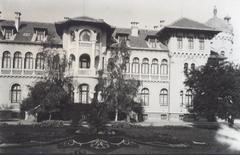University of Mining and Geology Saint Ivan Rilski Sofia: Visiting Hours, Tickets, and Historical Sites
Date: 14/06/2025
Introduction
The University of Mining and Geology “Saint Ivan Rilski” (UMG) in Sofia, Bulgaria, is a distinguished academic institution renowned for its pioneering role in mining, geology, and environmental sciences. Founded in 1953 during Bulgaria’s post-war industrialization, UMG has evolved from the High Mining and Geological Institute into a modern center for sustainable resource management and international research collaboration. Its namesake, St. Ivan Rilski, is revered as the spiritual patron of miners and geologists, symbolizing resilience and community.
Located in Sofia’s lively Studentski grad district, UMG is not just a hub for academic excellence but also a cultural and historical destination. Visitors are drawn by its mid-20th-century architecture, state-of-the-art laboratories, the renowned Geological Museum, and an Outdoor Geological Park. The university’s proximity to Sofia’s major attractions—like the National Palace of Culture, Boyana Church, and Vitosha Mountain—makes it an ideal stop for those interested in Bulgaria’s scientific heritage and urban culture.
This comprehensive guide provides essential information on UMG’s history, academic structure, visiting logistics, campus highlights, and surrounding attractions, ensuring a rich and organized experience both for educational and leisure visits. For the most current details, consult the official University of Mining and Geology website, Wikipedia, and Study Abroad Aide.
Contents
- Historical Development of the University
- Academic Structure and Programs
- Visiting the University: Hours, Tickets, and Practicalities
- Campus Overview and Facilities
- Guided Tours and Events
- Cultural Traditions and Symbolism
- Visitor Tips and FAQs
- Visual Gallery
- Conclusion and Recommendations
- Sources & Further Reading
Historical Development
Founding and Early Years (1953–1989)
UMG was established as the High Mining and Geological Institute (HMGI) in 1953, aiming to train specialists for Bulgaria’s vital post-war mining and geological sectors. It featured faculties such as Mining and Metallurgy, and Mining and Mechanical Engineering, supporting Bulgaria’s economic development throughout the socialist era (Wikipedia; MGU Official).
Transition and Modernization (1990–2005)
Following the political changes of 1989, UMG modernized its curriculum, expanded research, and established international partnerships. The institution adopted its current name in 2005 to honor St. Ivan Rilski. New academic fields, including environmental protection and sustainable resource management, were added (Study Abroad Aide).
Recent Developments (2005–Present)
Today, UMG educates more than 30,000 specialists, including international students from nearly 40 countries. It is actively involved in European research networks and scientific projects, reinforcing its reputation as Bulgaria’s leading university in mining and geology (MGU Official).
Academic Structure and Programs
UMG comprises specialized faculties:
- Faculty of Mining Technology
- Faculty of Geology
- Faculty of Mining Electromechanics
- Faculty of Hydrogeology
Programs are offered from undergraduate to doctoral levels, blending theoretical knowledge with extensive practical training (WHED). The curriculum covers mining engineering, geology, environmental science, and related disciplines.
Visiting the University: Hours, Tickets, and Practicalities
Visiting Hours
- Campus & Library: Monday – Friday, 8:00 AM – 6:00 PM
- Geological Museum: Monday – Friday, 9:00 AM – 5:00 PM (Closed weekends/public holidays)
- Outdoor Geological Park: Open daily, sunrise to sunset
Check event schedules or extended hours for special occasions via the UMG Official Website.
Tickets and Admission
- General Entry: Free to most campus areas and the museum.
- Special Exhibitions/Events: Some may require tickets, available on-site or online.
- Guided Tours: Advance booking required, especially for group visits (UMG Visitor Info).
Accessibility
- Most campus buildings feature ramps and elevators.
- For special needs or assistance, contact the university in advance.
Location & Getting There
- Address: ul. “prof. Boyan Kamenov”, Sofia 1700, Studentski grad
- Transport: Accessible by bus, trolley, and 15-minute walk from G.M. Dimitrov metro station.
- Parking: Limited on campus; public transport is recommended.
Campus Overview and Facilities
- Main Building: Administrative offices, lecture halls, and seminar rooms with bilingual signage.
- Faculty Buildings: Specialized in mining technology, geology, and engineering; feature modern labs.
- Research Labs: Advanced facilities for geophysics, mineralogy, and environmental monitoring.
- Library: Over 100,000 volumes; access available for visitors via temporary passes.
- University Museum: Geological Museum with 5,000+ minerals, fossils, and mining artifacts.
- Outdoor Geological Park: Hands-on educational park with rock specimens and mining equipment.
- Dining: Cafeteria and snack bars serving Bulgarian and international dishes.
- Sports & Recreation: Gym, outdoor fields, and fitness areas (open days/by arrangement).
Guided Tours and Special Events
- Guided Tours: Available in Bulgarian and English; book at least two weeks ahead via the UMG contact page. Tours cover academic buildings, labs, and the museum.
- Annual Events: Miner’s Day (September 18), Open Doors Day, and Science and Innovation Week (UMG Events).
- Public Lectures & Workshops: Check the news portal for the latest on ESG Academy and sustainability seminars.
Cultural Traditions and Symbolism
St. Ivan Rilski: Patron Saint
Honored as the university’s patron, St. Ivan Rilski symbolizes spiritual protection and resilience for the mining community. The university celebrates Patron’s Day on October 19th with academic ceremonies and cultural events (MGU History & Symbols).
Academic Rituals
- Freshmen Initiation: Welcoming new students into the “guild of miners and geologists.”
- Symbols: University flag, miner’s lamp, and ceremonial regalia used in academic processions.
Visitor Tips and FAQs
Tips for a Smooth Visit
- Language: Bulgarian is primary, but English is widely used.
- ID: Carry a passport or ID for guided tours.
- Photography: Allowed in public areas; restrictions apply in labs/museum.
- Safety: Studentski grad is lively—exercise standard caution, especially in evenings.
Frequently Asked Questions
Q: What are the university’s visiting hours?
A: Monday–Friday, 8:00 AM–6:00 PM for campus; 9:00 AM–5:00 PM for the museum.
Q: Is there an entrance fee?
A: General entry is free; special events may require tickets.
Q: Are guided tours available?
A: Yes, book in advance via the UMG website.
Q: Is the campus accessible for wheelchair users?
A: Most buildings have ramps and elevators; contact for assistance.
Q: How do I get to UMG from Sofia Airport?
A: By taxi, ride-sharing, or public transport, including buses and metro.
Q: Are accommodations available for visitors?
A: Short-term stays in student hostels may be arranged during academic breaks.
Q: What nearby historical sites can I visit?
A: National Palace of Culture, Boyana Church, Alexander Nevsky Cathedral, and Vitosha Mountain.
Visual Gallery


Maps and virtual tours are available on the official site for enhanced visitor engagement.
Conclusion and Recommendations
The University of Mining and Geology “Saint Ivan Rilski” is a cornerstone of Bulgaria’s academic and cultural landscape. Its evolution from a post-war technical institute to a modern center for sustainability and international research highlights its continued relevance. The accessible campus, extensive geological collections, and vibrant traditions make UMG a must-visit for students, researchers, and tourists alike.
To ensure the best experience:
- Review visiting hours and book tours in advance via the official website.
- Explore nearby Sofia historical sites and the natural beauty of Vitosha Mountain.
- Stay informed about events and visitor updates through social media and the Audiala app for interactive guides.
By visiting UMG, you engage with Bulgaria’s legacy of scientific innovation and cultural heritage.
Sources and Further Reading
- Historical Overview and Visitor Guide to the University of Mining and Geology Saint Ivan Rilski, Sofia, 2025, MGU Official Website
- University of Mining and Geology ‘Saint Ivan Rilski’ in Sofia: A Visitor’s Guide to Campus, Facilities, and Attractions, 2025, MGU Official Website
- Visiting the University of Mining and Geology ‘St. Ivan Rilski’: Traditions, History, and Visitor Information, 2025, MGU Official Website
- Visiting the University of Mining and Geology Saint Ivan Rilski in Sofia: Hours, Tours & Attractions, 2025, MGU Official Website
- University of Mining and Geology Saint Ivan Rilski, Wikipedia, 2025
- University of Mining and Geology Saint Ivan Rilski, Study Abroad Aide, 2025
